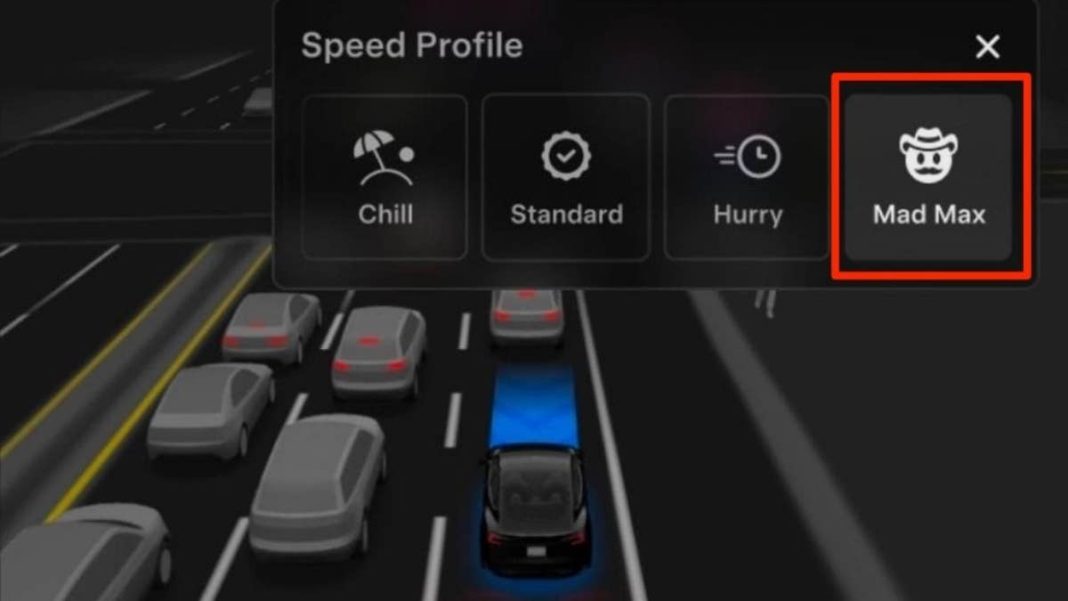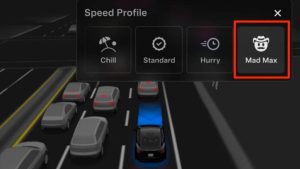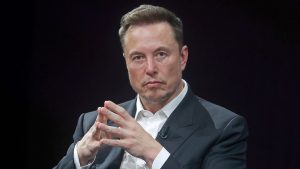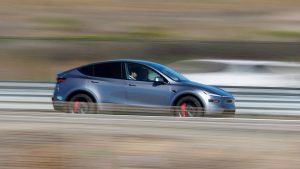Key Takeaways
- Tesla reintroduces aggressive ‘Mad Max’ mode in Full Self-Driving v14.1.2
- Feature allows higher speeds and more frequent lane changes than ‘Hurry’ mode
- Returns amid ongoing regulatory investigations and customer lawsuits
- Drivers report vehicles rolling stop signs and exceeding speed limits
Tesla has revived its controversial ‘Mad Max’ driving mode in the latest Full Self-Driving (Supervised) update, enabling more aggressive autonomous driving behavior. This comes as the automaker faces increased scrutiny from safety regulators and legal challenges from customers.
Mad Max Mode Returns in Latest FSD Update
Tesla recently launched FSD v14.1.2, introducing the return of Mad Max mode. This follows last year’s major FSD v14 release that featured “Sloth Mode” for more cautious driving. The new update represents the opposite approach with significantly more assertive driving behavior.
According to Tesla’s release notes, the Mad Max profile permits higher speeds and more frequent lane changes than the existing Hurry mode. The update has generated mixed reactions, with some Tesla enthusiasts praising the more natural driving feel while critics warn it encourages risky behavior during ongoing NHTSA and California DMV investigations.
History of Tesla’s Mad Max Mode Since 2018
The Mad Max setting originally debuted in 2018 for Tesla’s Autopilot system. Elon Musk initially described it as ideal for navigating aggressive city traffic. The name, inspired by the post-apocalyptic film series, immediately attracted attention for its bold branding.
Now reinstated in the latest FSD version, early reports indicate vehicles using Mad Max mode have been observed rolling through stop signs and exceeding speed limits. These initial observations suggest the mode operates more assertively than its previous iteration.
Why Tesla Brought Back Mad Max Mode
The revival serves multiple strategic purposes for Tesla. It demonstrates continuous FSD software development while appealing to drivers preferring faster, more decisive traffic navigation. The move also signals Tesla’s continued pursuit of Level 4 autonomy, despite the system remaining classified as Level 2 requiring constant driver supervision.
For Tesla, this feature showcases confidence in technological progress. However, observers question the timing, noting that with multiple investigations and lawsuits underway, many expected greater emphasis on safety rather than aggressive driving profiles.
What This Means For Drivers
Tesla owners with Full Self-Driving (Supervised) can access Mad Max mode through Speed Profiles in vehicle settings. The mode delivers quicker acceleration, increased lane changes, and reduced hesitation during navigation.
Important reminder: Tesla’s Full Self-Driving system requires active driver supervision. Motorists must maintain hands on the wheel and readiness to assume control immediately. Despite the thrilling name, safety and awareness remain paramount.
Other road users should exercise increased caution around Teslas. Vehicles using Mad Max mode may accelerate or change lanes more abruptly than anticipated. Providing additional following distance can help prevent surprises and enhance overall road safety.
Strategic Implications
Tesla’s decision to reintroduce Mad Max mode is both strategic and provocative. It resurrects an early Autopilot feature while reigniting debates about balancing innovation with responsibility. The return demonstrates Tesla’s continued testing of driver-assist technology boundaries and public acceptance limits.
The critical question remains: Will Tesla’s revived Mad Max mode represent a significant step toward full autonomy or a risky gamble in the competitive self-driving landscape?







